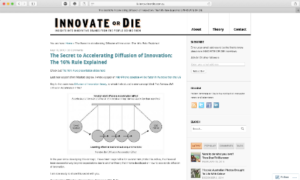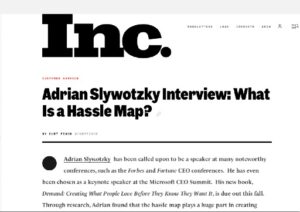Introduces the 16% rule, around diffusion – that you need to change the message and medium after 16% have adopted. This 16% relate to Rogers’ first two adopter categories: innovators and early adopters.
Reading time
<1 min








